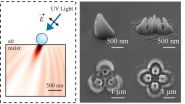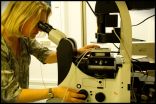Two papers in Health Affairs expose gaps in health coverage for children, recommend solutions
2014-12-08
(Press-News.org) WASHINGTON, DC (December 8, 2014)-- Despite the promise of health reform, millions of U.S. children still lack quality health coverage or have trouble getting the services they need to stay healthy or to develop properly, according to two articles published in the December issue of Health Affairs. To address these gaps in coverage, broad reforms aimed at improving the quality of coverage for all children are needed, according to the authors.
In the first article, Sara Rosenbaum, JD, the Harold and Jane Hirsh Professor of Health Law and Policy at Milken Institute School of Public Health (Milken Institute SPH) at the George Washington University, and Genevieve Kenney, PhD, senior fellow and co-director of the Urban Institute's Health Policy Center, focus on the future of health insurance coverage for U.S. children. Examining the growing role of public health insurance for this group, the authors describe how the Affordable Care Act (ACA) builds on earlier advances under Medicaid and the Children's Health Insurance Program (CHIP).
The authors also discuss the challenges involved in making the ACA's private insurance reforms work for children. These challenges include: eliminating the "family glitch," which bars subsidized Exchange coverage for children whose parents have employer coverage that is affordable only for themselves; and strengthening the coverage and cost-sharing standards that health insurance plans sold in the individual and small group markets must meet. "With these changes, the ACA's key promise - affordable, high-quality coverage for nearly all Americans - can be more fully realized for children," says Rosenbaum.
The second article, which Rosenbaum co-authored with colleagues at the Children's National Health System in Washington, DC, PolicyLab at The Children's Hospital of Philadelphia, and Johns Hopkins Bayview Medical Center, focuses on the Affordable Care Act's essential health benefit (EHB) coverage standard, which, as implemented for children, has resulted in a state-by-state patchwork of coverage for children and adolescents that contains significant exclusions, particularly for children with developmental disabilities and other special health care needs. The article represents the first comprehensive analysis of the ACA's essential health benefit standard in a pediatric context. Previous studies have compared the EHB standard more broadly to CHIP, but this analysis presents the detailed evidence regarding the types of exclusionary practices that limit the effectiveness of coverage for children insured through health plans sold in the individual and small group markets.
Despite the fact that the ACA provides both federal and state insurance regulators with the authority to define pediatric benefits to make coverage work better for children, the study finds that the essential health benefit standard, as implemented, fails to ensure that pediatric coverage reflects the health and developmental needs of children and that states show substantial variation in the quality of coverage they guarantee. The authors recommend major reforms for the 2016 plan year, including the development of a national standard of child health coverage that can be adopted by all states.
INFORMATION:
About Milken Institute School of Public Health at the George Washington University:
Established in July 1997 as the School of Public Health and Health Services, Milken Institute School of Public Health is the only school of public health in the nation's capital. Today, nearly 1,534 students from almost every U.S. state and more than 45 countries pursue undergraduate, graduate and doctoral-level degrees in public health. The school also offers an online Master of Public Health, MPH@GW, and an online Executive Master of Health Administration, MHA@GW, which allow students to pursue their degree from anywhere in the world.
ELSE PRESS RELEASES FROM THIS DATE:
2014-12-08
WASHINGTON, DC - December 9, 2014 - Seasonal flu vaccines may protect individuals not only against the strains of flu they contain but also against many additional types, according to a study published this week in mBio®, the online open-access journal of the American Society for Microbiology.
The work, directed by researchers at St. Jude Children's Research Hospital in Memphis, Tenn., found that some study participants who reported receiving flu vaccines had a strong immune response not only against the seasonal H3N2 flu strain from 2010, when blood samples were ...
2014-12-08
San Francisco children living in non-redeveloped public housing are 39 percent more likely to repeatedly visit emergency rooms, according to new research from UC San Francisco and UC Berkeley.
"The average emergency department (ED) visit costs two to five times more than an office visit, and many children visit EDs for potentially preventable reasons," said Nancy Adler, PhD, senior author of the research, and vice chair of the department of psychiatry and director of the Center for Health and Community at UCSF. "There is a clear need to better understand the range of ...
2014-12-08
(SALT LAKE CITY)- It's a virus that has long been characterized as dangerous and even deadly, but new research shows infant deaths from respiratory syncytial virus (RSV) are actually quite uncommon in the 21st century.
Researchers at the University of Utah have shown there are approximately 42 deaths annually associated with RSV in the United States, and of those deaths, the majority are in infants and young children that have complex preexisting chronic conditions.
"The news is very good for parents and their babies," says Carrie Byington, M.D., professor of pediatrics ...
2014-12-08
Two-dimensional (2D) layered materials are now attracting a lot of interest due to their unique optoelectronic properties at atomic thicknesses. Among them, graphene has been mostly investigated, but the zero-gap nature of graphene limits its practical applications. Therefore, 2D layered materials with intrinsic band gaps such as MoS2, MoSe2, and MoTe2 are of interest as promising candidates for ultrathin and high-performance optoelectronic devices.
Here, Pil Ju Ko and colleagues at Toyohashi University of Technology, Japan have fabricated back-gated field-effect phototransistors ...
2014-12-08
Physical activity increases oxidative stress, and therefore, as an antioxidant vitamin C might have particularly evident effects on people who are participating in vigorous exercise. In several studies, vitamin C administration attenuated the increases in oxidative stress markers caused by exercise. Furthermore, vitamin C is involved in the metabolism of histamine, prostaglandins, and cysteinyl leukotrienes, all of which appear to be mediators in the pathogenesis of exercise-induced bronchoconstriction.
A meta-analysis of three studies found that vitamin C halved post-exercise ...
2014-12-08
A new analysis of an important trial of the blood pressure-lowering procedure, renal denervation, shows that the main results may have been affected by a number of confounding factors that partially explain the unexpected blood pressure responses in patients.
The analysis, published in the European Heart Journal [1], identified factors in the SYMPLICITY HTN-3 trial, such as variations in the way the procedure was performed and changes in patients' medications and drug adherence, which may have had a significant impact on the results.
Results of the SYMPLICITY HTN-3 ...
2014-12-08
An international research team that includes researchers from Lawrence Livermore National Laboratory has captured the highest-resolution protein snapshots ever taken with an X-ray laser, revealing how a key protein in a photosynthetic bacterium changes shape when hit by light.
Human biology is a massive collection of chemical reactions and all involve proteins, known as the molecules of life. Scientists have been moving steadily toward their ultimate goal of following these life-essential reactions step by step in real time, at the scale of atoms and electrons.
"These ...
2014-12-08
(SAN FRANCISCO, December 6, 2014) - Novel treatments that harness the body's own immune cells to attack cancer cells demonstrate safe and durable responses in patients with relapsed and treatment-resistant blood cancers, according to data presented today at the 56th American Society of Hematology (ASH) Annual Meeting and Exposition.
Therapies designed to target the immune system and ignite the body's own disease-fighting mechanisms have become an increasingly promising field of study, particularly in blood cancers. While the immune system can easily recognize viruses ...
2014-12-08
Researchers from North Carolina State University have developed a new lithography technique that uses nanoscale spheres to create three-dimensional (3-D) structures with biomedical, electronic and photonic applications. The new technique is significantly less expensive than conventional methods and does not rely on stacking two-dimensional (2-D) patterns to create 3-D structures.
"Our approach reduces the cost of nanolithography to the point where it could be done in your garage," says Dr. Chih-Hao Chang, an assistant professor of mechanical and aerospace engineering ...
2014-12-08
Nature's ingenious systems: A layer of cells called endothelial cells lines the interior of blood vessels. When blood flows through the vessels, such cells only divide to replace dead cells. However, if there is a blood clot preventing blood from flowing across the endothelial cells, they begin to divide more actively. New research from the Niels Bohr Institute demonstrates that cell division is very ordered. The new cells move away from each other and create a dynamic movement with eddies in a large area. This presumably helps to widen the vessel around the blockage. The ...
LAST 30 PRESS RELEASES:
[Press-News.org] Two papers in Health Affairs expose gaps in health coverage for children, recommend solutions


